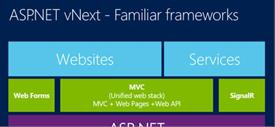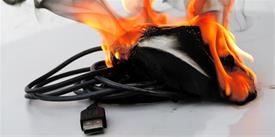How Good Project Management Contributes to Workplace Safety
Workplace safety has been increasingly on our minds for the best part of the past 18 months. However, there is more to the matter than returning to the office safely in a post-Covid world.
In this post, we’ll be looking at the different ways good project management contributes to workplace safety. We’ll also go over why project managers need to care about the issue in the first place.
Let’s dive right in.
A Centralized Contact Point
Workplace safety is very rarely compromised out of the blue. We can’t predict earthquakes, but we are able to identify the dangers we can alleviate ourselves. For example, someone not wearing the right safety equipment or a face mask can be seen as a risk.
Potentially dangerous situations can also develop over time. Equipment can get damaged, a flight of stairs may be extra slippery after every maintenance, and so on.
Good project management will serve as a centralized point of contact for anyone who notices something that can compromise the safety and health of their fellow employees. Without it, it won’t be anyone’s job to handle the situation. And that means it may be left unattended until it causes an accident.
Ensuring Rules and Regulations are Met
Project management will also mean the difference between testing all equipment regularly and forgetting to do so.
It can ensure that:
- everyone has attended the required safety courses
- people’s licenses are up to date
- all the health and safety rules and regulations are adhered to regularly
Providing Information When Needed
Good project management will also ensure that everyone is kept up to date about, well, everything. That includes not only the daily tasks that need to be handled but also any snags or potential difficulties ahead.
It also serves as a way of keeping employees and top-level executives in the loop about health or safety issues. How else would people know the coffee machine is out of order but being repaired as we speak?
Providing a Point of Contact for Outsiders
Most companies have to deal with outsiders fairly regularly: the postman, various delivery men, clients, and customers are likely to visit your premises. Good project management will provide an initial contact point, ensuring that none of these people wander around unaccompanied.
Visitors may inadvertently breach some of your safety rules. For example, they may not wear a face mask at all times, which can be in conflict with the demands you have for everyone on the premises. By letting visitors know what the expected conduct is, they will be able to adhere to it without a hitch.
How to Manage Workplace Safety
To reap all of these benefits, you, as a project manager, need to ensure certain requirements are met and certain tasks are executed on a regular basis. Here is what you need to do:
Have a List of Protocols Ready
First, you need to establish what your health and safety protocols are in the first place. Make sure that they comply with any local or national laws and regulations. Furthermore, you’ll also want to ensure that they are well-suited to your organization.
Write them down in clear language and share them with every member of staff. Not everyone will need to know every part of the protocol, but being aware of the bigger picture will enable everyone to act to the best of their abilities should anything happen.
Hold Regular Safety Meetings
Safety meetings and fire drills are never the most interesting of activities, yet they are absolutely necessary and are the core of a well-thought-out safety protocol.
Define the topics you want to discuss in the safety meeting, and make sure you don’t overwhelm the attendees. One topic at a time will do, and try to make the meeting as interactive as possible by asking questions, soliciting opinions, and getting everyone involved.
Delegate Intelligently
Workplace health and safety are never a one-person show, and they always depend on the contribution of the entire team. By delegating all of the different roles, you will be making sure that everyone knows what they need to do in case of an emergency.
This will eliminate a lot of panic, as training should kick in and everyone should handle the task they were given. Make sure you delegate based on people’s personalities and experiences. Don’t make someone who is habitually late a key link in the chain, as they may not be in the office when you need them the most.
Keep Emergency Supplies in the Workplace
Ensure that the office has emergency kits for unexpected situations. There should be a complete medical kit with high-filter masks like KN95 respirators, sterile gloves, gauzes, antiseptics, bandages, and medications. Fire extinguishers should be placed in strategic areas in the office.
Final Thoughts
Workplace health and safety can incredibly benefit from good project management. When employees feel safe at work and know that everything has been done to ensure they are protected, they will be much more at ease and be able to perform better. This will ultimately positively impact the company’s growth, further improving both productivity levels and the bottom line.
Related Posts
Blackmail is a serious crime that can cause immense stress and fear.
In today's data-driven world, databases form the backbone of countless applications and systems that power businesses across industries.
It’s no longer a hidden fact that social media platforms like Facebook affect the mental health of users.
Relocating an IT company is a significant endeavor that involves careful planning, coordination, and execution.
Today maintaining office security has become an important concern for businesses of all sizes.
A registered office address is a fundamental requirement for any business entity, whether it’s a corporation, limited liability company (LLC), or partnership.













Comments
comments powered by Disqus